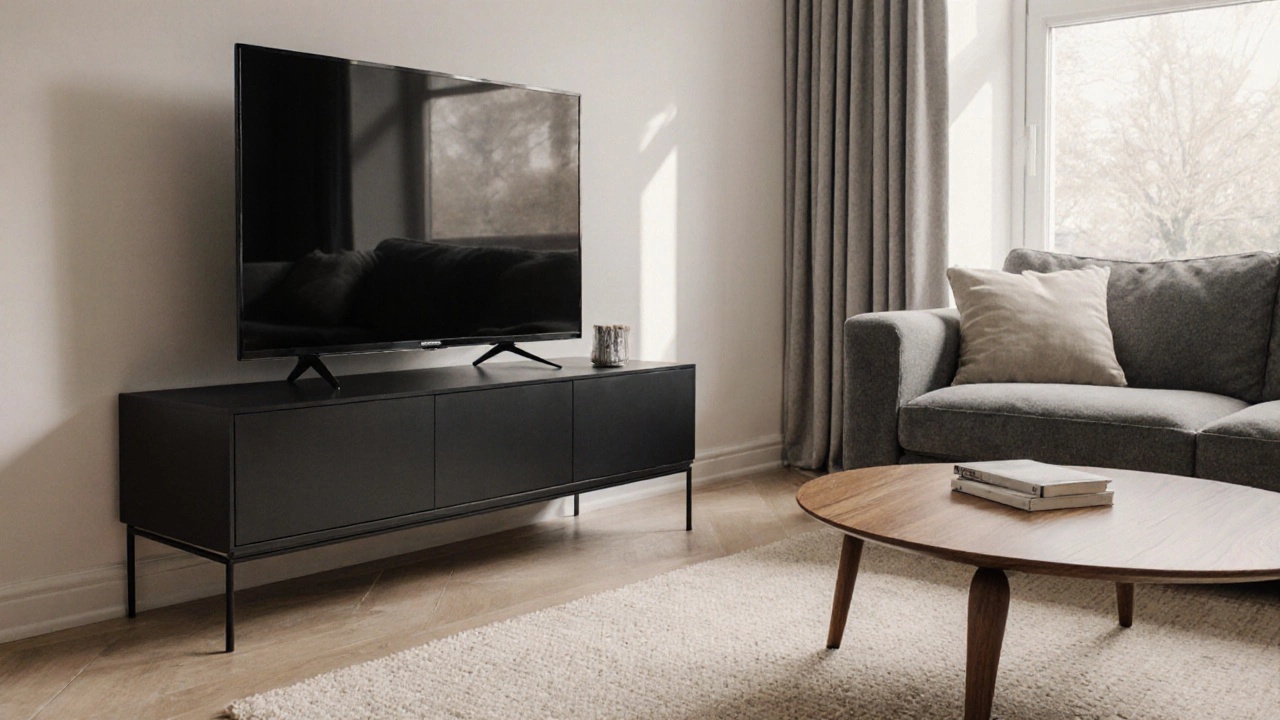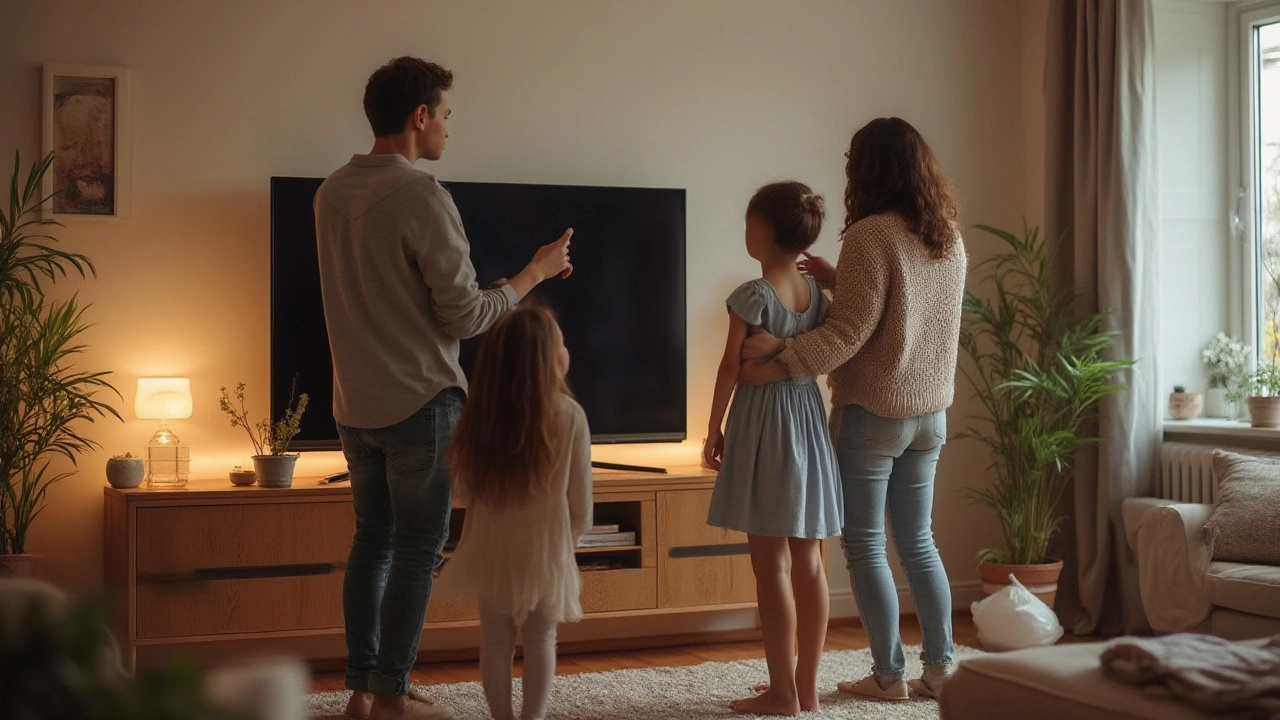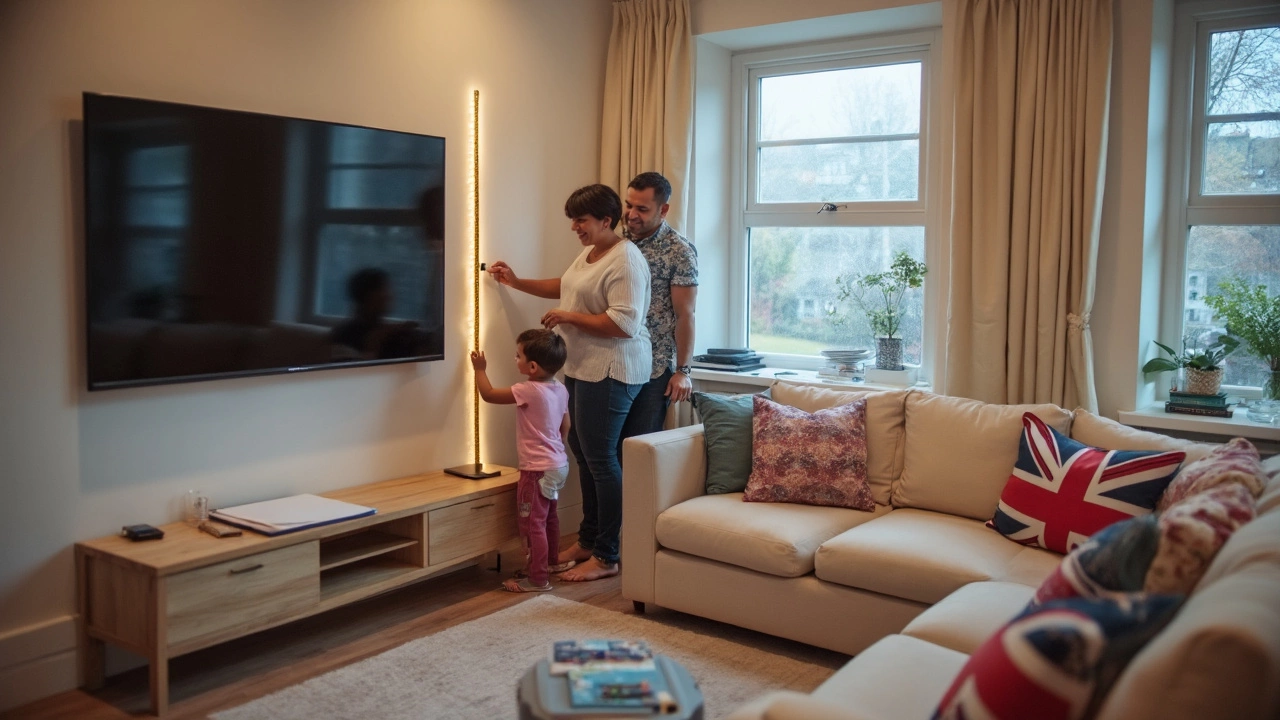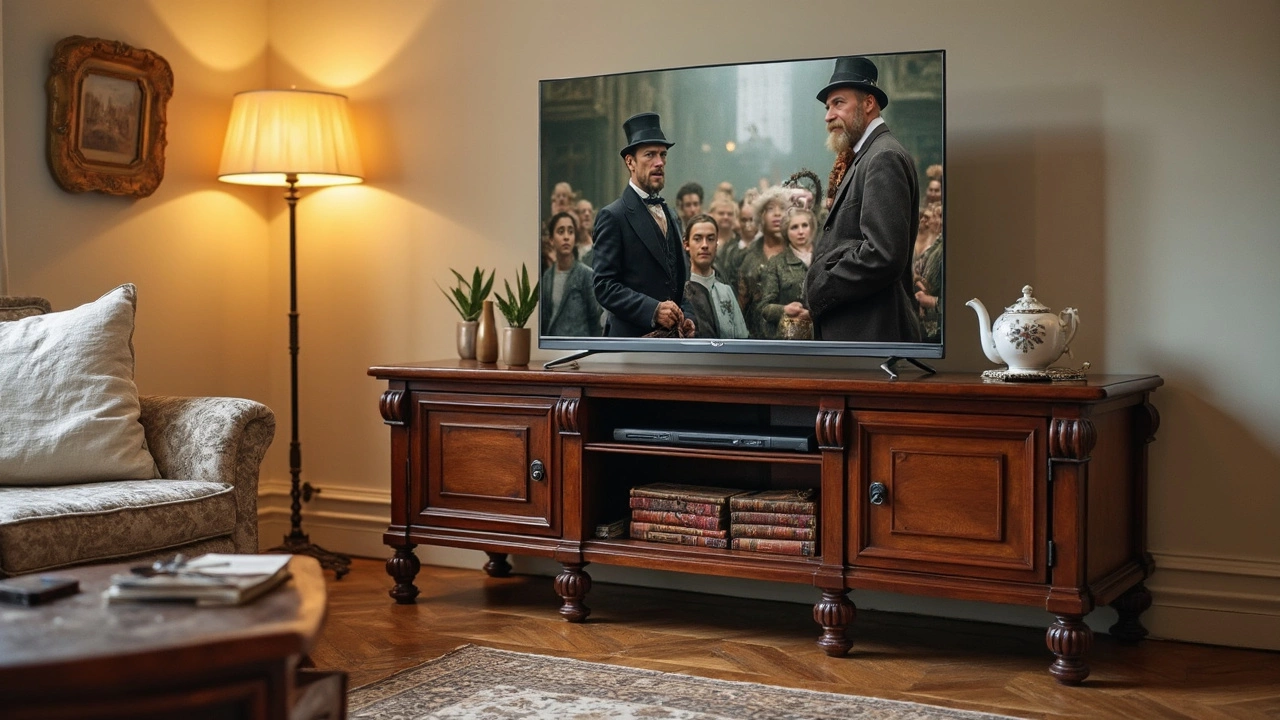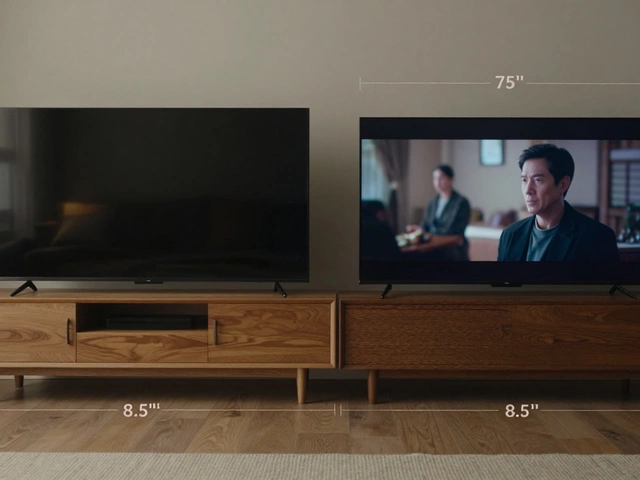TV Stand Buying Guide – Choose the Right Size and Style
Looking for a TV stand that actually works for your room? You’ve probably seen endless options, but most of them miss the basics. Let’s break down the key decisions so you can pick a stand that holds your TV securely, fits the wall, and looks good with the rest of your décor.
How to Size Your TV Stand
The first rule is simple: the stand should be wider than your TV. A good rule of thumb is to add at least 3‑4 inches to each side of the screen. If you have a 65‑inch TV, aim for a stand that’s at least 70‑71 inches wide. That extra width catches accidental bumps and gives the TV room to breathe.
Height matters, too. Your eyes should line up with about the middle of the screen when you’re seated. Most sofas sit about 42‑44 inches from the floor, so a stand that’s 24‑30 inches high usually works. If you’re watching from a recliner or a higher chair, adjust accordingly.
Weight capacity is non‑negotiable. Check the manufacturer’s specs and compare them to your TV’s weight. A 65‑inch LED can weigh 40‑50 lbs, while a large OLED might be heavier. If the stand can’t handle the load, you risk a dangerous slip.
Style and Material Choices
Modern homes love clean lines, but a traditional wood finish still sells in many rooms. Choose a material that matches the rest of your furniture. Solid wood adds warmth, while metal and glass give a sleek, contemporary vibe. Keep in mind that glass can show fingerprints, and metal may show scratches.
Storage is a nice bonus. Open shelves are great for consoles and speakers, while closed cabinets hide cords and DVDs. If you have a gaming setup, look for a stand with a built‑in cable management system to keep the floor tidy.Don’t forget the room’s layout. In a small living room, a low‑profile stand keeps the ceiling feeling high. In a larger space, a taller stand can act as a focal point. Measure the distance from the wall to your sofa and leave at least a foot of clearance for easy access.
Our own post “Perfect TV Stand Size for 65 Inch TVs” walks through exact dimensions and common mistakes to avoid. The article shows why a stand that’s too short can make the TV look unstable, and why an overly long stand can dominate the wall.
Another handy read is “How Much Longer Should a TV Stand Be Than the TV?” It explains the visual balance you get when the stand extends slightly beyond the screen, creating a subtle frame that draws the eye.
When you’re ready to shop, set a budget and stick to the essentials: width, height, weight limit, and material that matches your décor. Skip the flashy LED lights unless they’re part of your design plan – they add cost without improving function.
Finally, test the stand if you can. Bring a tape measure to the store, place a cardboard cut‑out of your TV on the surface, and see how it feels. If it looks stable and looks right, you’ve found a winner.
Picking the right TV stand doesn’t have to be a mystery. Follow these sizing rules, choose a style that fits your room, and you’ll end up with a safe, attractive base for many years of binge‑watching.
Should Your TV Stand Match the Coffee Table? Practical Design Tips
Explore whether your TV stand must match the coffee table, learn harmony tricks, material pairings, style combos, and a practical checklist for a cohesive living room.
Should I Put My TV on a Stand? Practical Pros, Cons, and Setup Tips
Confused about where your TV should go? Discover if your TV belongs on a stand, what to look out for, pros, cons, safety, and tips for the perfect setup in any room.
65 Inch TV Height: How High Off the Floor Should You Mount It?
Wondering how high you should mount your 65 inch TV? This guide lays out the perfect viewing height, explains why it matters, and clears up the confusion surrounding TV placement. You'll find practical tips, tricks that actually help, and some fun facts you probably haven't heard before. Get ready to make your living room more comfortable and avoid neck pain for your next binge-watching session. You'll never think about TV height the same way again.
Convert Wall-Mounted TV to Stand: Easy Steps and Pro Tips
Switching your TV from a wall mount to a stand might sound tricky, but it’s doable with the right know-how. This guide breaks down everything you need, from understanding mounting holes to picking the right stand. No need to call a handyman—you can handle it yourself in an afternoon. Learn how to choose the safest and most stylish stand for your space. Stop letting a wall dictate your living room layout.
Should Your TV Be Bigger Than Your TV Stand? Real Talk About Size and Setup
Trying to figure out if your TV should be wider than your TV stand? This article breaks down what actually works best—both for safety and style—and why the right size matters more than you think. You'll get practical tips on matching your screen to your furniture, clever ideas for awkward setups, and real-life mistakes to avoid. Whether your space is big or tight, you'll learn how to pull off a layout that won't leave you worrying about wobbles or weird looks. No fluff, just the facts and hacks you actually need.
How Wide Should a TV Stand Be for a 65-Inch TV?
Choosing the right TV stand for a 65-inch TV involves more than just matching the screen size. With so many styles and materials available, it’s essential to consider the stand’s width, height, and overall design to ensure stability and aesthetics. A good rule of thumb is to choose a stand that's a few inches wider than the TV for balance and a harmonious look in your living space. This guide helps you pick the perfect stand to complement your lounge and elevate your viewing experience.
TV Stand Rules: Practical Tips for Perfect Placement
Choosing the right TV stand involves more than just matching your décor. It's about height, stability, and space optimization to enhance your viewing experience. Discover the basic rules for sizing, positioning, and styling your TV stand to make sure your living room looks great and your TV is secure. Tailor each aspect to fit your lifestyle, ensuring both functionality and aesthetics.
